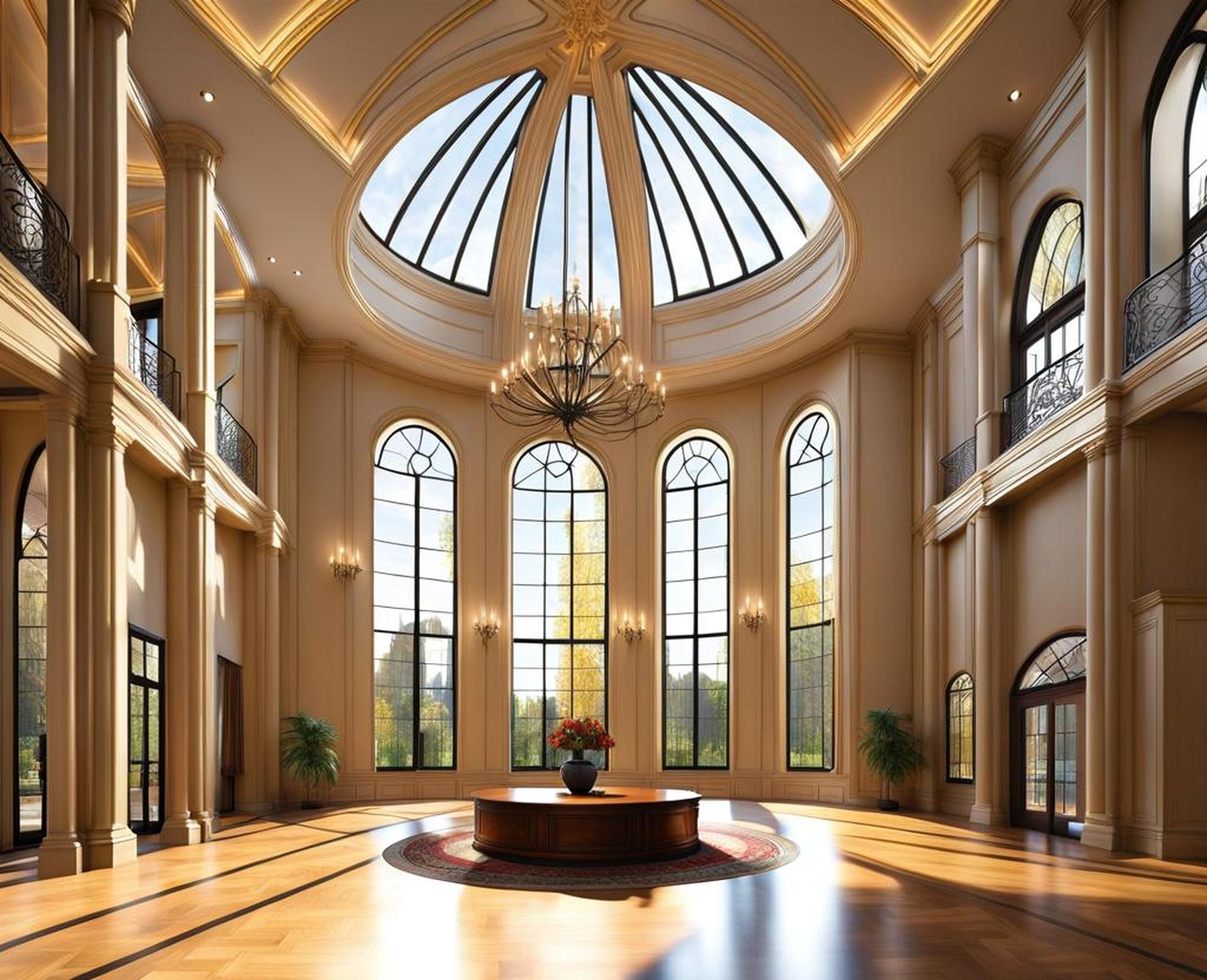Rooms with extremely tall or cathedral ceilings can feel cavernous and overwhelming. But strategic lighting placement can help shrink the appearance of high ceilings so the space feels more intimate and inviting.
From statement chandeliers to perimeter cove lighting, your lighting choices can transform a space. Follow these professional tips for lighting tall ceilings and you’ll end up with a room that’s both visually stunning and functionally illuminated.
Maximize Natural Light While Controlling Glare
Start by taking advantage of any existing daylight from windows, skylights or clerestories. Motorized blackout shades allow you to control the amount of natural light flooding into the space. This helps create a cozier ambiance in the evening, while saving energy costs.
Layer the Lighting for Functionality
In addition to overall ambient lighting, incorporate task lighting and accent lighting through multiple layers:
- Task lighting like desk lamps for reading nooks
- Accent lighting to highlight artwork and architectural details
- Wall sconces, floor lamps and table lamps for flexible illumination
Use Lighting to Draw Focus
Strategically place lighting to create a focal point, like a chandelier over a dining table or pendant lights over a kitchen island. Spotlights or picture lights can illuminate artwork. Uplighting and downlighting also help establish a visual anchor in the space.

Select Bulbs and Fixtures to Brighten the Space
To properly illuminate a space with high ceilings, choose bulbs and fixtures with sufficient wattage and lumens. Cool white LEDs offer bright, energy efficient lighting. Place multiple fixtures to avoid dark corners or shadows.
Hang Pendants and Chandeliers Lower
Hanging a statement pendant or chandelier 1-2 feet lower than your actual ceiling line brings the eye downward. Cascading styles create dramatic visual interest. Place larger fixtures like wide drum chandeliers to make a bold impact.
Install Perimeter Cove Lighting
Concealed LED strip lighting around the perimeter of the ceiling casts an aura-like glow and defines the edges of the space. Grazing wall wash lights also draw the eye to the vertical boundaries.
| Uplighting | Aiming lights up from below to wash the walls with light. |
| Downlighting | Directing light downwards from recessed or track fixtures. |
Accent Architectural Features
Use lighting to accentuate columns, beams or any ornamental architectural details. Grazing lights highlight surface textures, while strategically placed downlights create connections from the ceiling to the floor.
Incorporate Ceiling Clouds
Dropped ceiling sections at least 1 foot lower than the main ceiling allow for recessed cans and pendant lights at human scale. This technique can make a voluminous space feel more intimate.
The right lighting design can reduce the height of any space. Layer fixture types, play with lighting angles and colors, and leverage architectural details to bring visual interest lower. Your lighting choices can turn a cavernous space into a warm and inviting environment. Use these professional techniques to illuminate and celebrate grand rooms with tall ceilings. The possibilities are as high as you dare dream!
